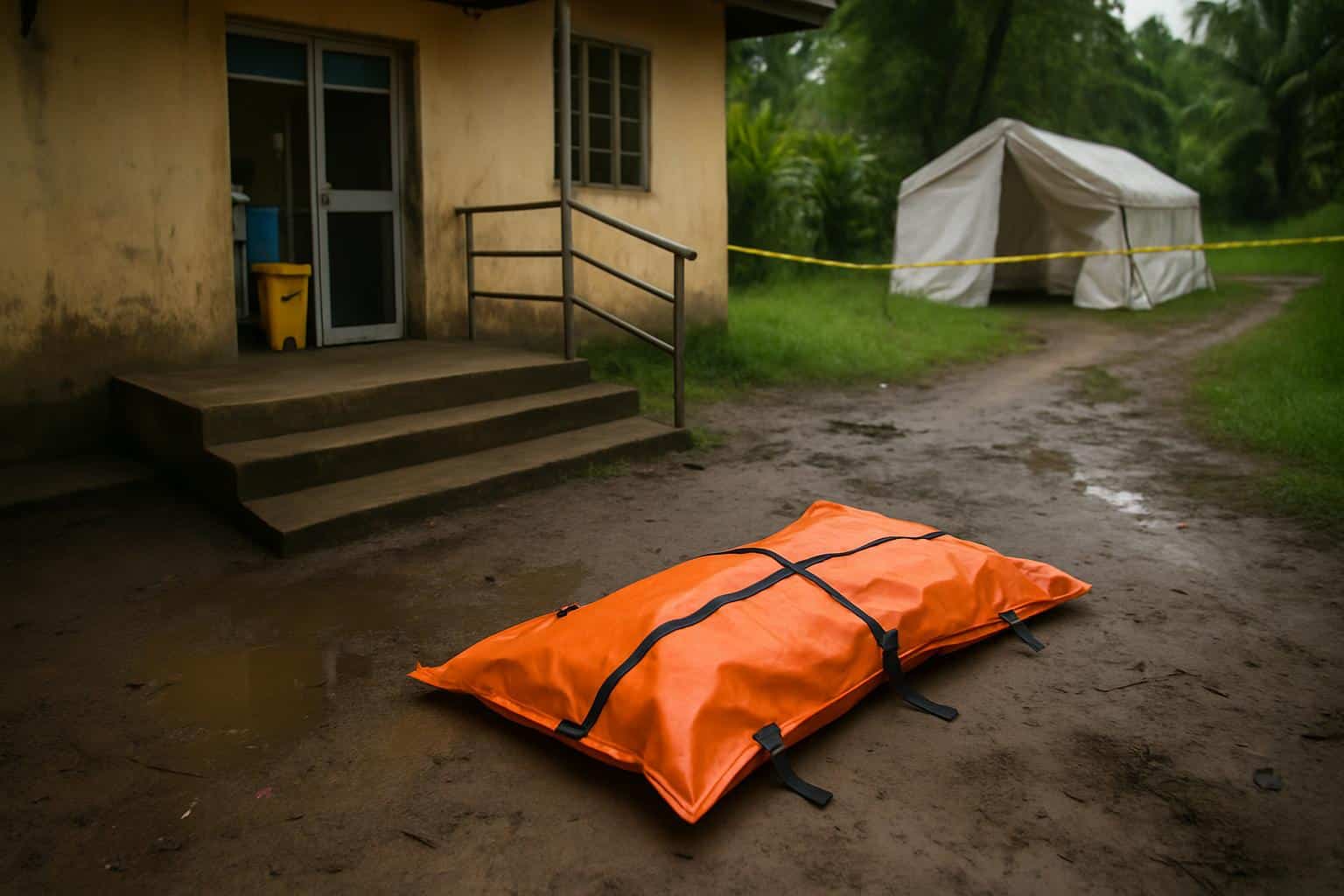At least 15 people have died in a new outbreak of Ebola in the Democratic Republic of Congo, the authorities said on Monday, adding that they have confirmed a case of the virus in a dozen people who are sick in the country.
The outbreak was declared in central Kasai province, Health Minister Eteni Longondo said on Monday.
“This is Covid and Ebola,” Longondo said. Health officials have tallied 28 suspected cases and four health workers are among the dead — a sign of early transmission inside clinical settings that usually amplifies risk.
The outbreak was discovered after a 34-year-old pregnant woman went to a hospital with a high fever and severe vomiting. She died within hours after developing multi-organ failure, and tests in the laboratory confirmed that she had Ebola. The Ministry of Health, with backing from the World Health Organization, says there are likely more infections on the way as contact tracing widens by the day and teams hunt down chains of transmission.

Kasai, another new cluster, sparks concern
Kasai is located on major road axes and river lines of communication, causing fears the virus could move rapidly between communities. Whereas previous large outbreaks in the country have been localized in the east, this central cluster highlights the national problem of containing the deadly infection in a health system already strained with limited staffing, supplies, and referral capacity.
This is the country’s 16th outbreak of Ebola since the virus was discovered near the Ebola River in what is now DR Congo in 1976. The last outbreak in the country was extinguished after six reported deaths, but a previous crisis in the east killed more than 2,000 people and demanded one of the most elaborate emergency responses ever mobilized in the region.
What officials have learned so far
Field laboratories are being set up at emergency centers to test the virus, and contact tracers are tracking exposures across affected health zones and isolating suspected cases; and safe and dignified burials are being conducted. Infections in health workers point to holes in the system — triage, P.P.E., or rapid isolation, and leaders in the response will look to close them in the first days of an operation, when the epidemic curve is most malleable.
Ebola is spread through direct contact with blood or other body fluids from a symptomatic person, including caregiving and funerals. Since the incubation period is two to 21 days, the number of cases rises as contact tracers find those exposed and then track them throughout the risk window.
Vaccination and treatment capacity
Authorities have a reserve of the Ervebo vaccine that contains about 2,000 doses that could rapidly be deployed. At its core is “ring vaccination” which means protecting contacts and their contacts around each case. Success will depend on quick confirmation processes, accurate contact lists and cold-chain integrity that can ensure that doses remain viable as they are deployed to hot, remote areas.

Treatment has also gotten better since earlier outbreaks. Monoclonal antibody therapies — concoctions like Inmazeb and Ebanga that have been sanctioned by global health agencies — can lower mortality, if given early, and aggressive supportive care (fluids, electrolytes and treatment of complications) dramatically increases the survival rate. Historically, the case fatality rate with the Zaire strain has varied significantly, frequently at about 50% if not aggressively managed; in fully functioning treatment centers, the outcomes are far better.
Containment challenges
Community trust is vital. In previous outbreaks, fear and misinformation stalled access to care and contact tracing. Public health teams have since focused on community-led risk communication, working with religious and traditional leaders and safe burial practices that honor tradition while halting transmission.
Kasai’s location in south-central DR Congo also raises cross-border vigilance, especially on trading routes leading to Angola. The Africa Centres for Disease Control and Prevention, and neighbouring ministries typically activate entry screening and event-based surveillance upon a cluster in this region.
Regional and global readiness
The World Health Organization says it is moving quickly to stop transmission by dispatching epidemiologists, logisticians and infection prevention specialists. Laboratory confirmation is done in collaboration with the National Institute of Biomedical Research in Kinshasa, with rapid testing in-country run in remote areas closer to the outbreak to cut down on turnaround time. UNICEF is expected to provide support for community engagement and water, sanitation, and hygiene supplies, whereas medical nongovernmental organizations like Médecins Sans Frontières often contribute to setting up or reinforcing dedicated Ebola treatment units.
What to watch next
Early signs of control include increased proportions of new cases who are already on known contact lists, shorter time intervals from onset to isolation, and high ring-vaccination coverage around confirmed cases. If response teams quickly shield healthcare facilities, oversee safe burials and retain the community’s collaboration, this cluster can be contained at a far faster pace than the massive outbreak to the east that paralyzed services years ago.
For now, the imperative is plain and urgent: track each and every contact; get help to the sick rapidly; protect health workers in the line of fire; and get injections where they will save the most lives. With the right blend of speed, trust, and logistics, the death toll doesn’t have to rise any higher.

